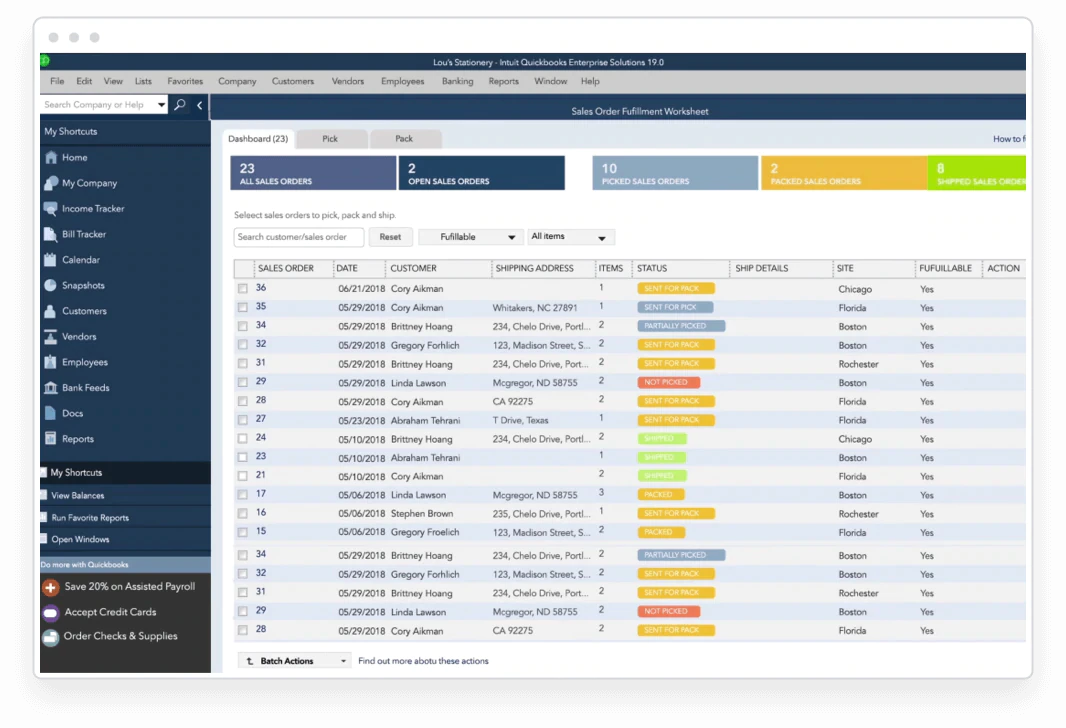How to import your Customer List to QuickBooks Online in just minutes!
One of the most common questions we get is how do I import my customer list into my new QuickBooks Online Account? Learn how to import your customer or vendor contact lists from an Excel Sheets in just a few minutes with this blog.
Do you have a customer or vendor list that you'd like to bring into QuickBooks Online? We'll show you how to export your list as a spreadsheet. Then we'll show you how to import them directly into QuickBooks.
If you rather watch our TikTok video, click here!
Things to know before you import contacts
- The file size limit is 2MB or 1000 rows. If you need to import a list larger than that, you'll need to split it up into multiple imports.
- Sub-accounts can't be imported. We recommend changing the sub-accounts into parent accounts before you import. Then you can change them back after the import.
- If the file is imported incorrectly and it needs to be re-imported, your customer or vendor list won't be overwritten, which can create duplicate entries. You'll need to delete the imported customers or vendors before re-importing, or edit each one individually.
- The entries in the Name field must be unique. A vendor, customer, or employee can't have the same name as another.
- The import only supports one email address. Don't worry, you can add others in QuickBooks later.
- When importing contacts from a spreadsheet, make sure that:
- Column headers are in the first row.
- Contacts are on Sheet1 of the spreadsheet.
- The spreadsheet doesn't have any formulas, charts, or blank rows.
- The spreadsheet doesn't have any errors, such as #REF!, #NAME?, #N/A or #VALUE!.
- Names don't contain colons (:) or quotation marks (").
Export your contacts
If you have a contact list in Outlook or Gmail, you can export a CSV file of your contacts and import it to QuickBooks.
To import a spreadsheet into QuickBooks, you'll need to format it correctly. Then follow these steps to create your spreadsheet.
- Create a new spreadsheet in Excel or Google Sheets.
- Make sure you're using Sheet1 of the spreadsheet.
- Make sure that row 1 of your spreadsheet is filled in like the Spreadsheet Column key below (under the capital letters). For example, label column A, row 1 as Full Name. Label column B, row 1 as Company Name, etc. Also make sure there are no blank cells or other headers at the top of the spreadsheet.
- Fill in your spreadsheet with your contacts' information. It's ok to leave any information that you don't have as blank. Note: The import maps the contact's address to the billing address field in QuickBooks Online.
- If you're using Excel, save the spreadsheet as an; .XLS or an XLSX file and note where you save it. Or, if you're using Google Sheets, the spreadsheet will save automatically.
Import your contacts
Now that your spreadsheet is accurate, you're ready to import your contacts to QuickBooks Online.
- Sign in to QuickBooks.
- Select Settings ⚙. Then select Import Data.
- Select Customers or Vendors, depending on which you are importing.
- Select Browse to upload the file from your computer. Choose the file, and select Open.
- Or, to upload from Google Sheets, select Connect to sign into your Google account. Choose the file, and then Select.
- Select Next.
- In the Your Field column, select each small arrow ▼ icon. Then, match your field to the corresponding QuickBooks Online field.
- Select No Match if you have a field that doesn't have a matching column in your spreadsheet.
- Confirm your contacts. Uncheck any that you don't want to save.
- If everything looks good, select Import.


